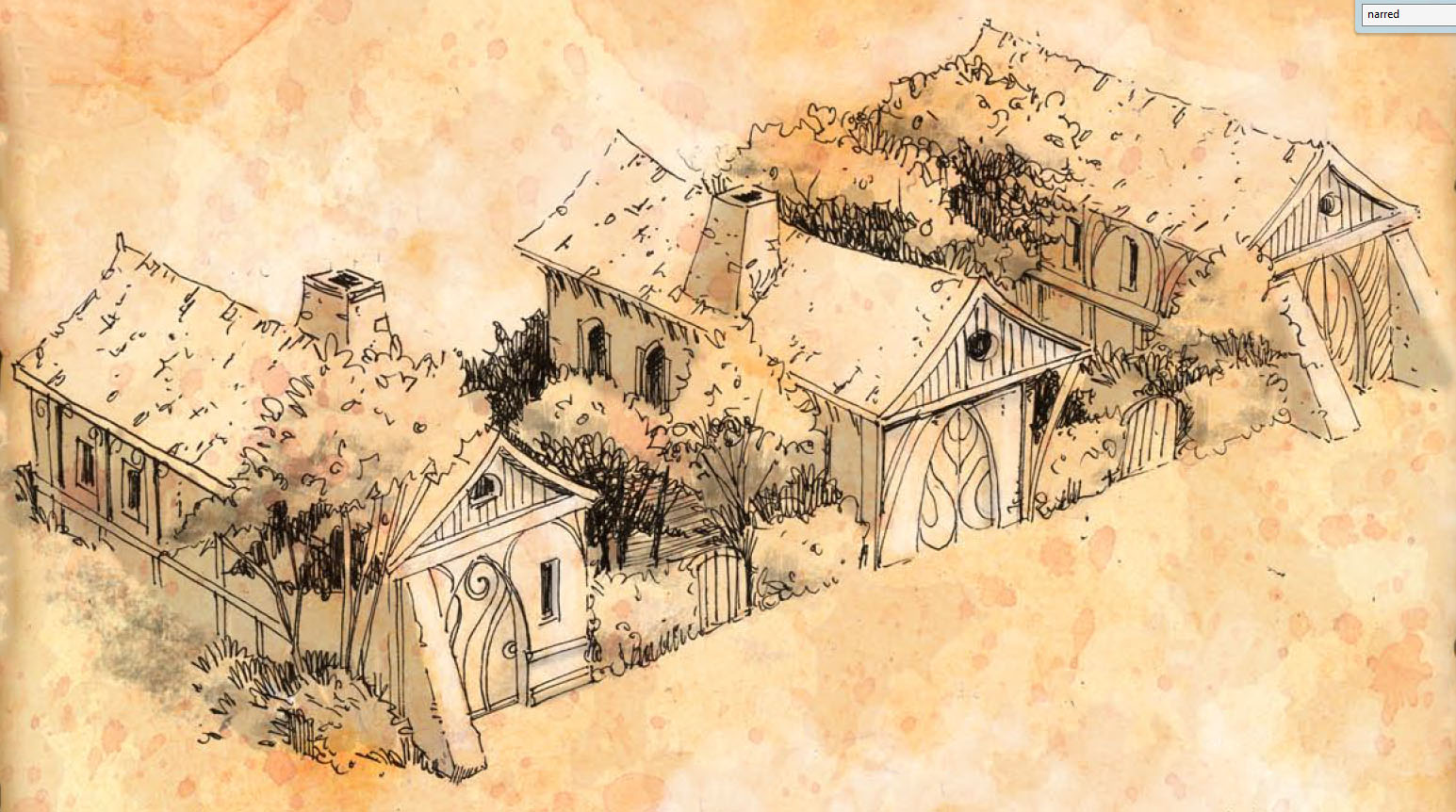IN THE SHADOW OF THE SPIRE
Harvesttime – Part 2: Dominic and the Guidance of Vehthyl
When Dominic headed across the bridge into the Temple District, he made gentle inquiries into the worship of Vehthyl and discovered four options: First, the Order of the Silver God. Second, the Temple of the Clockwork God. Third, the Temple of the Ebon Hand. And, finally, an itinerant minotaur priest named Shibata.
What I’m going to talk about here isn’t really a preconceived or formal technique. It’s something that I’ve just kind of instinctively done in the past without even really thinking of it as being a distinct “thing” that I’ve been doing. But as I was re-reading the campaign journal and thinking about what I had done as a GM, it kind of jumped out and bit me. I’m not even sure I would have noticed at all if it wasn’t for the close proximity of what I did with Tor and Dominic here.
So this installment of Running the Campaign is probably going to be a little more rough around the edges as I kind of grope my way towards both understanding and articulating the technique here.
To start with, you have a PC who has an interest.
- Tor is interested in becoming a knight.
- Dominic is interested in learning more about Vehthyl.
Dominic’s interest has arisen out of play and is primarily player-driven, and so the response is being created on-the-fly. (Fairly literally in this case, as the bluebooking for this session allowed me to basically roll along with the player’s intentions and develop material in a very reactive way.) Tor’s interest was collaboratively built up in character creation, so I built a good chunk of this material up in parallel with that character creation process and have been waiting to incorporate it into the campaign for several sessions now.
(Although the specific impetus, it should be noted, was still ultimately player-driven even here: Tor’s player had seen the tourney fields on the map of the city and said, “I want to go to there.” I just needed to figure out how I could use the existing material I built in support of this impulse, and vice versa.)
He cantered Blue over to the Board of Ranks, on display just outside of the lists. Each name was noted with heraldry, and he noted that most of the names were accompanied by the three prominent heraldries on display (along with a smattering of others): The cross upon a field of a crimson of the Knights of the Golden Cross; the sword-and-vortex of the Knights of the Pale; and the dawning sun above the martial field of the Order of the Dawn.
The key technique here is that, in response to these PC interests, I haven’t built one thing which would satisfy that interest: There’s not one Church of Vehthyl for Dominic to go ask his questions at. There’s not a single order of knighthood in Ptolus for Tor to pursue.
Instead, I’ve created – or pulled forward – a nest of factions surrounding their area of interest. In the case of this particular session, the factions are actually quite explicitly spelled out (although that doesn’t necessarily need to be the case; there are a lot of different ways to introduce these factions into play), as you can see in the quotes above.
These factions all inherently have overlapping interests and competing agendas regarding those interests because they’re all specifically related to the PCs interests. (Which means that the PC – and presumably their player – will also be inherently vested in those interests.) At this point, I don’t really have a firm idea of how the interactions between these factions are going to play out, but if you’ve got enough people pointing guns at each other (either literally or figuratively) something interesting is probably going to fall out as a result of the PCs bouncing around like ping-pong balls.
WHY DOES THIS WORK?
First, it gives the player a meaningful choice in how their character is going to pursue their interest.
What you want to avoid here, of course, is reverting this back to a meaningless choice where, for example, there are eight different Churches of Vehthyl, but it doesn’t matter which one the player chooses. The factions Dominic has to choose between can, on a certain level, be boiled down to:
- The Imperial Church
- A well-established Reformist Church
- A Reformist cult
- A lone, unaffiliated religious teacher
Ignoring all of the other details about those factions, this essential choice about where Dominic will turn first in his desperate need for guidance is going to speak volumes about his faith and about who he is as a person.
Tor, by contrast, isn’t really in need during this session. He’s really just checking out the buffet and seeing what’s available, so you can see that the distinctions between the different orders of knighthood are not as sharply drawn here. That’s partly because the player wasn’t motivated to dig deeper: Tor could’ve taken the opportunity of the tourney to meet more of the knights and learn more about their different missions and ideologies. The fact he didn’t at this particular time is actually a meaningful choice in itself. But even if it wasn’t, that’s fine: The meaningful choices are going to come later for Tor and they are going to have a ton of weight.
Second, the inter-relationships between the factions turns the PC into a billiard ball. The player’s initial choice is their first shot, and the effect they’ll have on the table full of balls is impossible to predict. As a result, the outcome of that choice (and their subsequent choices) will be completely surprising to everyone at the table, including the GM. The campaign will be forever different as a result, and it’s quite likely the campaign world will be, too.
As a result, it’s not just a meaningful choice, it’s a momentous choice.
Players can sense that. They know when their choices have completely and irrevocably shaped what the experience of the campaign is. And they love it. They eat it up.
OTHER THOUGHTS
As you’ll see, Tor’s and Dominic’s factions actually end up overlapping and interacting with each other as the campaign continues. This increases the chaotic unpredictability of your campaign once you set these forces in motion; it also helps to draw the PCs closer together.
This overlap is something that you can specifically design into the factions when you set them up, but you’ll also find it arising organically through play: After all, these factions will all end up having a common connection through the PCs. Eventually, that will bring them into orbit with each other… and send them crashing into each other.
What about wasted prep? I’ve been talking about smart prep lately, and here I seem to have deliberately set up wasted prep: Dominic chooses one of the Vehthyl-related factions to seek advice from and then nothing happens with the others.
Well, first, this stuff usually doesn’t require a heavy initial prep load. Most of the time you can probably get away with one or two paragraphs, and then you can develop more in response to the direction the PC chooses to leap. Prep will also overlap. For example, knowing how the orders of knighthood operate in the Five Empires is going to be meaningful to Tor’s character goals regardless of which order of knighthood he chooses to pursue.
More importantly, the prep you don’t immediately use will almost certainly end up getting reincorporated in other ways down the line. These are, after all, significant factions. The whole point is that they’re deeply involved in your campaign world. And they are, after all, related to each other, so no matter which one the PC chooses, the others are likely not too far away.


 And of course, sometimes you do need to draw a hard line. The One Ring isn’t the One Ring if it isn’t the One Ring; it can’t be part of a JCPenney jewelry collection.
And of course, sometimes you do need to draw a hard line. The One Ring isn’t the One Ring if it isn’t the One Ring; it can’t be part of a JCPenney jewelry collection.











